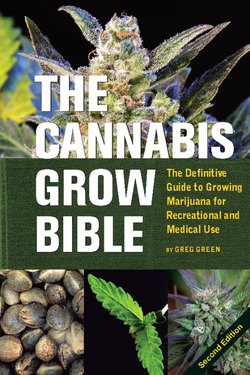Читать книгу The Cannabis Grow Bible - Greg Green - Страница 46
На сайте Литреса книга снята с продажи.
Dioecious, Monecious, and Hermaphrodites
ОглавлениеIt is unwise to use the term “mainly” to support one sexual description of cannabis. While we find “dioecious” populations having the male and female reproductive organs borne on loose panicles and racemes “separately” as individuals (having the male and female reproductive organs borne on separate individuals of the same species), we also find populations or members within dioecious populations bearing “both” male and female organs that are “monecious.” Likewise, we can say that we find dioecious members within monecious populations. For monecious members, the respective organs can be found within the same floral cluster: the inflorescences. Sexually, we can describe any cannabis member as:
| Hermaphrodite | Only hermaphrodite plants. |
| Monecious | Only monecious plants. |
| Dioecious | Only dioecious plants. |
| Gynodioecious | Both female and hermaphrodite plants present. |
| Androdioecious | Both male and hermaphrodite plants present. |
Trioecious / Subdioecious Male, female, and hermaphrodite plants are all in the same population.
Some colas have short twisted sticky buds but the resin and taste produced by these plants is something to behold.
While all dense clusters of female flowers produced by cannabis are loosely referred to as “bud,” all unfertilized female flowers are called “sinsemilla”; however, the nature of members of plant populations that are hermaphrodite, monecious, gynodioecious, andridioecious, or subdioecious will tend to produce pollen that fertilizes the female flowers, producing seeded buds. While in general seeded bud is regarded as low in quality, this is not because of potency factors—as long as the pistils have time to mature to the point of optimal potency—but because it is harder to work with bud that has seeds. Seeds are sought afterwards in breeding programs, but usually only healthy ones from dioecious parents.
